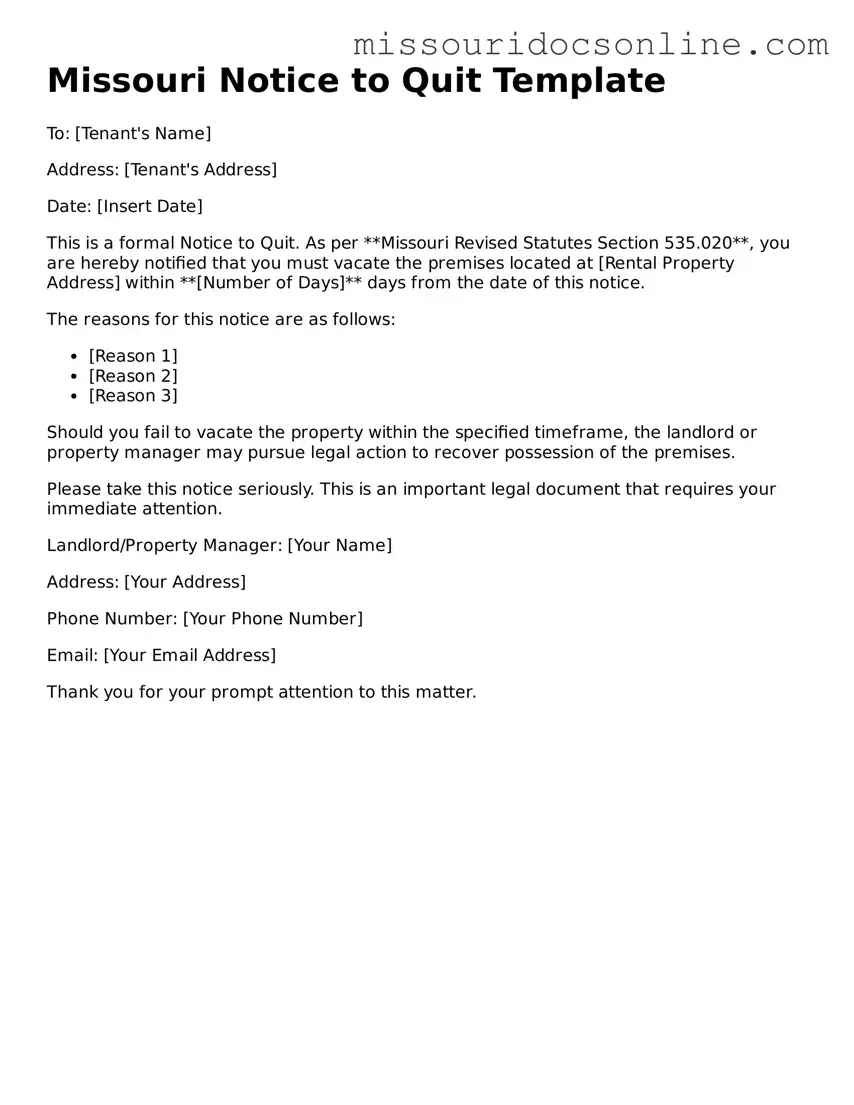Attorney-Approved Notice to Quit Form for Missouri State
The Missouri Notice to Quit form is an important document used by landlords to formally notify tenants that they must vacate the rental property. This notice typically outlines the reasons for eviction and provides a timeline for the tenant to respond. Understanding this form can help both landlords and tenants navigate the eviction process more smoothly.
Ready to take the next step? Fill out the form by clicking the button below.
Access Notice to Quit Editor
